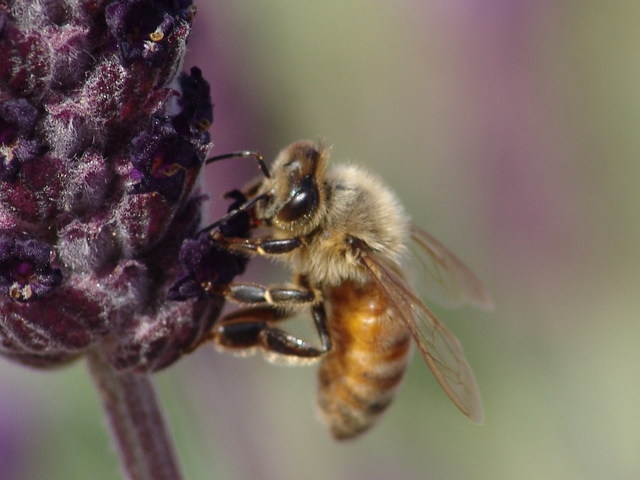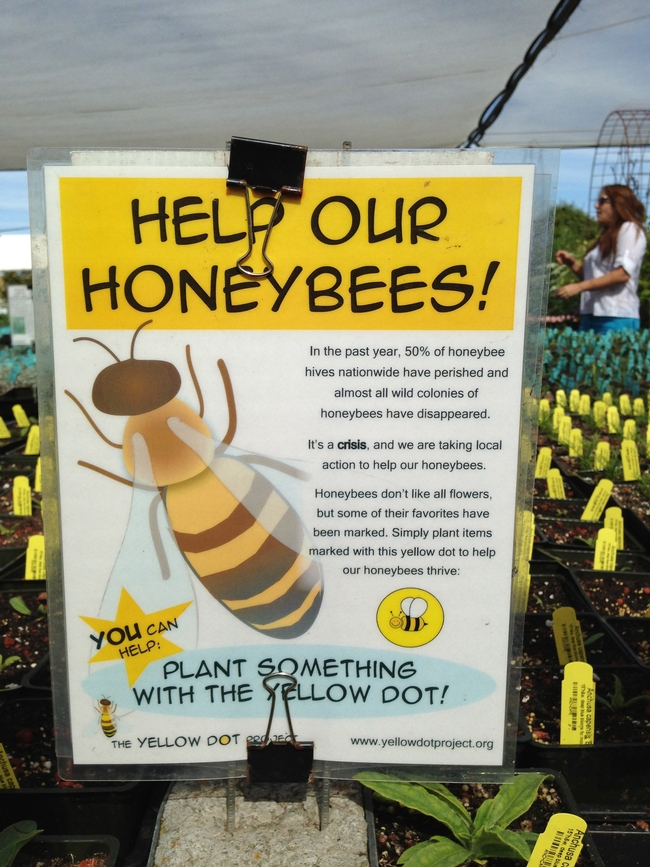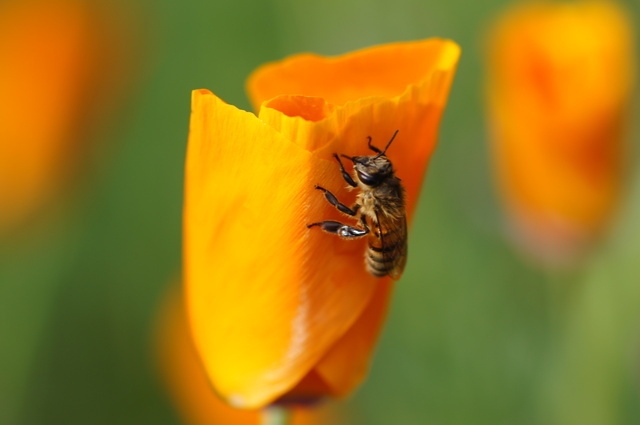A Honey of an Idea
Have you ever been out on a sunny day, walking barefoot happily through the clover when suddenly you yelp and begin to jump around trying to ease the sudden stinging pain in your foot? Yes, so have I. Well, the culprit is most likely the gentle little honeybee, one of nature's hardest working and least aggressive little beings. However, if a giant were going to step on me I'd use all my weapons to protect myself, too! Thus, the sad, negative reputation of the honeybee (Apis mellifera).
However, the honeybee is not only our friend, but also a very important part of our symbiotic natural family. According to National Geographic's most recent article (May 10, 2013), "About a third of our foods (some 100 key crops) rely on these insects, including apples, nuts, all the favorite summer fruits (like blueberries and strawberries), alfalfa (which cows eat), and guar bean (used in all kinds of products). In total, bees contribute more than $15 billion to U.S. crop production, hardly small potatoes." That's what makes the staggering disappearance of so many bees in the last few years such a troubling problem.
As you may have heard, during the winter of 2007 many beekeepers across the USA reported unusually large honeybee losses. The puzzling thing was that there were no piles of dead bees near the hives as happens if the bees are directly exposed to pesticides. It seems that the worker bees just began disappearing, leaving the queen and the young bees alone in the colony. However, the colony needs the worker bees to bring home the food and without them the hive and all the bees therein eventually dies. This is called Colony Collapse Disorder (CCD).
Over the years since that time studies have failed to conclusively identify the cause, but the result is that about 47% of the honeybees across the USA have been lost. (Figures from winter 2012-2013.) The EPA reports that several contributing factors are suspected:
- increased losses due to the invasive varroa mite (a pest of honeybees);
- new or emerging diseases such as Israeli Acute Paralysis virus and the gut parasite Nosema;
- pesticide poisoning through exposure to pesticides applied to crops bee management stress;
- foraging habitat modification
- inadequate forage/poor nutrition and
- potential immune-suppressing stress on bees caused by one or a combination of factors identified above.
What can we as gardeners do to help? We can, of course, avoid using pesticides in our gardens--especially neonicotinoids (approved for use in the US, but recently banned in the European Union). We can also provide a healthy and attractive habitat for honeybees. Enter the Yellow Dot Project (yellowdotproject.org). They not only publish a very extensive list of plants that are good food for honeybees, but also have connected with several nurseries in our area to identify for us exactly which plants on their shelves are best for the bees. Fantastic! All we have to do is look for the yellow dot on the plant i.d. marker. What could be easier?
I learned of the Yellow Dot Project on my visit to Annie's Annuals in Richmond last Saturday. Check out the website to see which plants in your garden are already at work helping the honeybees or just to find a "Yellow Dot" nursery to visit.

Honeybee on lavender. (photo by Thomas C. Tucker)

Help Our Honeybees. (photo by Marian Chmieleski)

photo by Thomas C Tucker

